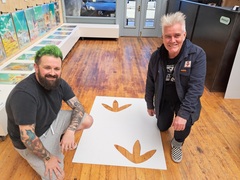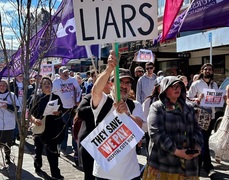Hardwired for softness - artist follows her heart with residency
Ashley Smyth
09 October 2024, 7:00 PM
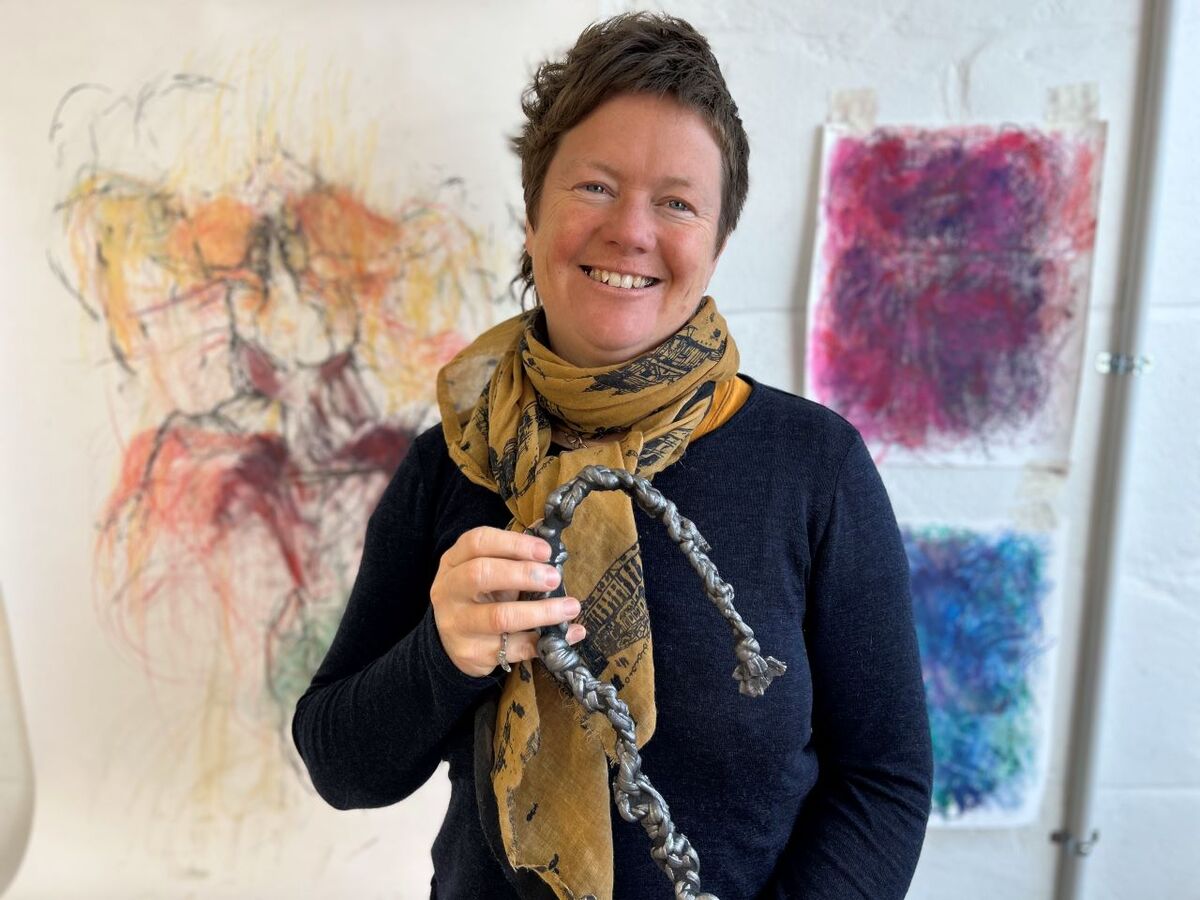 Sian Quennell Torrington with a piece she has cast during her art residency at Crucible Gallery. Photo: Ashley Smyth
Sian Quennell Torrington with a piece she has cast during her art residency at Crucible Gallery. Photo: Ashley SmythArtist Sian Quennell Torrington once had an exhibition called Soft is stronger than hard, and her residency at the Crucible Gallery, and life itself, continue to reinforce that concept for her. (3-minute read)
Sian travelled south from Naenae, near Wellington, and has been in Ōamaru for five weeks, as one of the first two artists to take part in a new residency, funded by the Hynds Foundation.
Local artist Karen Aitken is the other resident.
Sian’s interest in the residency, where artists have the opportunity to work with metal casting equipment at Gillies Metaltech, was sparked by a fascination with Boudica, a 1st Century queen of the British Iceni tribe.
“So I read a series of books during the last few years about Boudica . . . she brought together and led tribal armies and fought the Romans who were colonising their land.
“She's a real person, and I grew up knowing about her and visiting some of those places in the UK.”
Boudica’s father worked with metal, Sian says.
“So there's all this writing about her casting metal, and the fire and the skill and the risk and you know, all of the elements of that amazing process. It really captured me.”
The concept of armour and the way people “armour” themselves with their bodies, in terms of clenching fists, or tensing muscles, as a “bodily way of protecting ourselves” and the impact that can have, also interests Sian.
“You know, we get sore, and we injure ourselves, and also we're not able to let life and feelings flow . . . because we're in that state of defensiveness and hardness.
“So for me, this residency is a way to explore materially the idea of armouring and hardness and the things that get sort of stuck in our bodies.
“Like when we have a massage or we do yoga and there's a pose . . . and the tears come . . . It really releases something.”
The release brings a “softening”, Sian says, and her art is about bringing together the hard and the soft, and “representing what’s inside on the outside, physically”.
Earlier this year, she did an art project called, How Is Your Heart? as part of the Performance Arcade in Wellington, where artists gather in a “village” of containers along the waterfront. She was there for two days, and had created a collection of wearable sculptures.
She asked people the question “How is your heart?” and they would choose a sculpture that resonated with them and how they were feeling at the time, and put it on like a necklace.
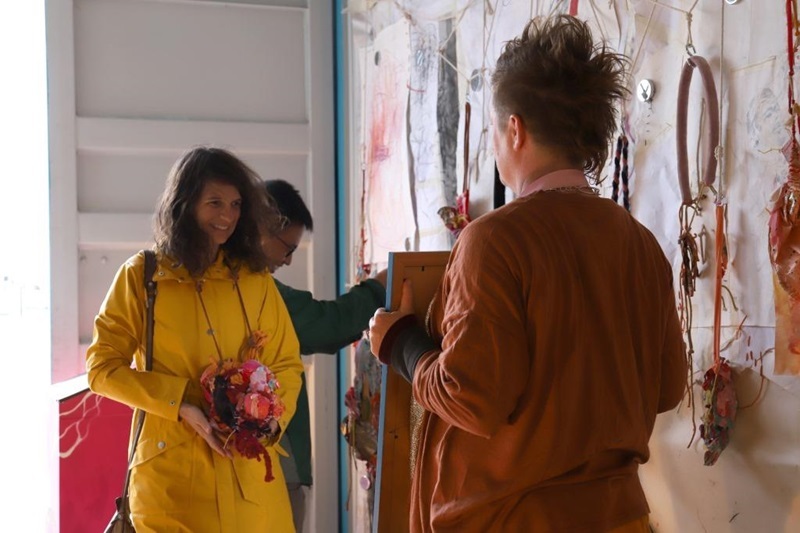
A visitor to Sian's How is Your Heart project in Wellington earlier in the year. Photo: Supplied/Tash Helasdottir-Cole
“Because the last few years have been hard, right? For everyone. And it's been a collective experience of things being hard," Sian says.
“Often someone you know is having a really rough time and you can support them . . . but this has been, everyone is having a hard time. Everyone is struggling at the same time. And I noticed that it had become hard to answer the question, ‘How are you?’ You know. It just feels like, ‘where do I start?’.”
The project drew in 400 people, and after two 12-hour days, Sian came away feeling tired but “nourished”.
“There's a lot of giving when you're an artist . . . and what happened with this exhibition, was it came back. There was a loop.”
That exhibition, followed by a conversation with a good friend, made Sian realise what she needed to do next was to explore within herself what she was asking of other people.
“What is my heart? How do I show that? And so that's what I'm doing here.”
A foundry is about transformation, she says.
“Radically amazing transformation.
“I mean, when they poured the pieces last week - it looks like they're just pouring fire.
“So, what I'm doing here is transformation - and inspired by that process of melting what's hard, making it into what's soft.”
Since beginning her 12-week residency, Sian has been surprised at what works as a casting mould and what doesn’t.
A hard sculpture that she pressed into the sand as a pattern for a mould was too complex, and the sand collapsed as the sculpture was removed.
Using soft patterns, such as a sculpture made from fabric, works better once the sand has hardened around it, because it remains soft and so is easier to remove.
“Because it's soft, you can sort of manipulate it. It moves.
“Again, it's about that resilience . . . which isn't resisting, which is about, you know, letting our feelings out, sharing them, providing ways to do that, and the very process itself is saying that. It’s saying if you can't move, if you can't be soft, it will break.”
The incongruity of seeing her soft, pink fabric sculpture in such a “traditionally masculine environment” like the foundry is not lost on Sian.
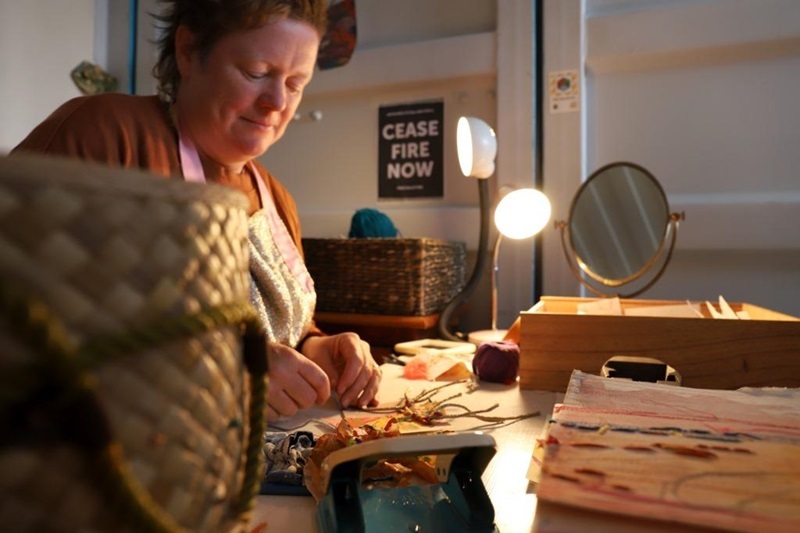
The artist at work. Photo: Supplied/Tash Helasdottir-Cole
“Nothing is pink . . . There are huge machines. There is steel. There is metal . . . and to be in there with these men who are totally dedicated to making this is amazing . . . and they are so respectful and they're so interested.”
“Often, women, the feminine, we get laughed at. We get, ‘Oh, what's that silly frippery little thing?’
“This little pink scraplet of a sculpture is so important to them. I'm being treated with so much respect and that's transformational in itself for me, and I think it would be for most women. To have that experience, you know, because these little things, these soft things, they are really important.”
The residency is Sian’s third. Her first was in Samoa and her second in India, and she says residencies are about being somewhere completely different and opening yourself up to new experiences.
She could stop tomorrow and say, “wow, it’s been amazing”.
She has a Masters of Fine Arts from the School of Art - Whiti o Rehua at Massey University, and before her 20-year career as an artist, Sian worked in the fashion industry.
“I made clothes and sold clothes and ran my own little business.”
She made all her own patterns - a painstaking process - and so when she lost them all in one go at Heathrow Airport, Sian’s life veered off on a sharp tangent.
“So things changed. It was devastating . . . I'd put so much work into making those and you craft them and you change them and you develop them . . . and you know, it's just massive.
“I knew I couldn't go backwards, I couldn't remake them. I had to go forwards, and what I had was a studio in Wellington.”
Sian had always wanted to paint and do art, so used this as an opportunity. She started drawing the trees out of her studio window.
“It's like the forces that be go, ‘you know, you need to change and it's going to hurt, but it's going to be fast. Bang!’.”
Sian is loving being looked after in Ōamaru, and relishing learning a new craft.
She loves listening to the penguins at night, and the ocean, and feels grateful that people have been so open to working with her and collaborating, and inviting her along to things.
“Because you're away from partner and friends and everything else . . . Three months is long enough that you do actually have to build a little life.”
NEWS
MUSIC
SHOP LOCAL
